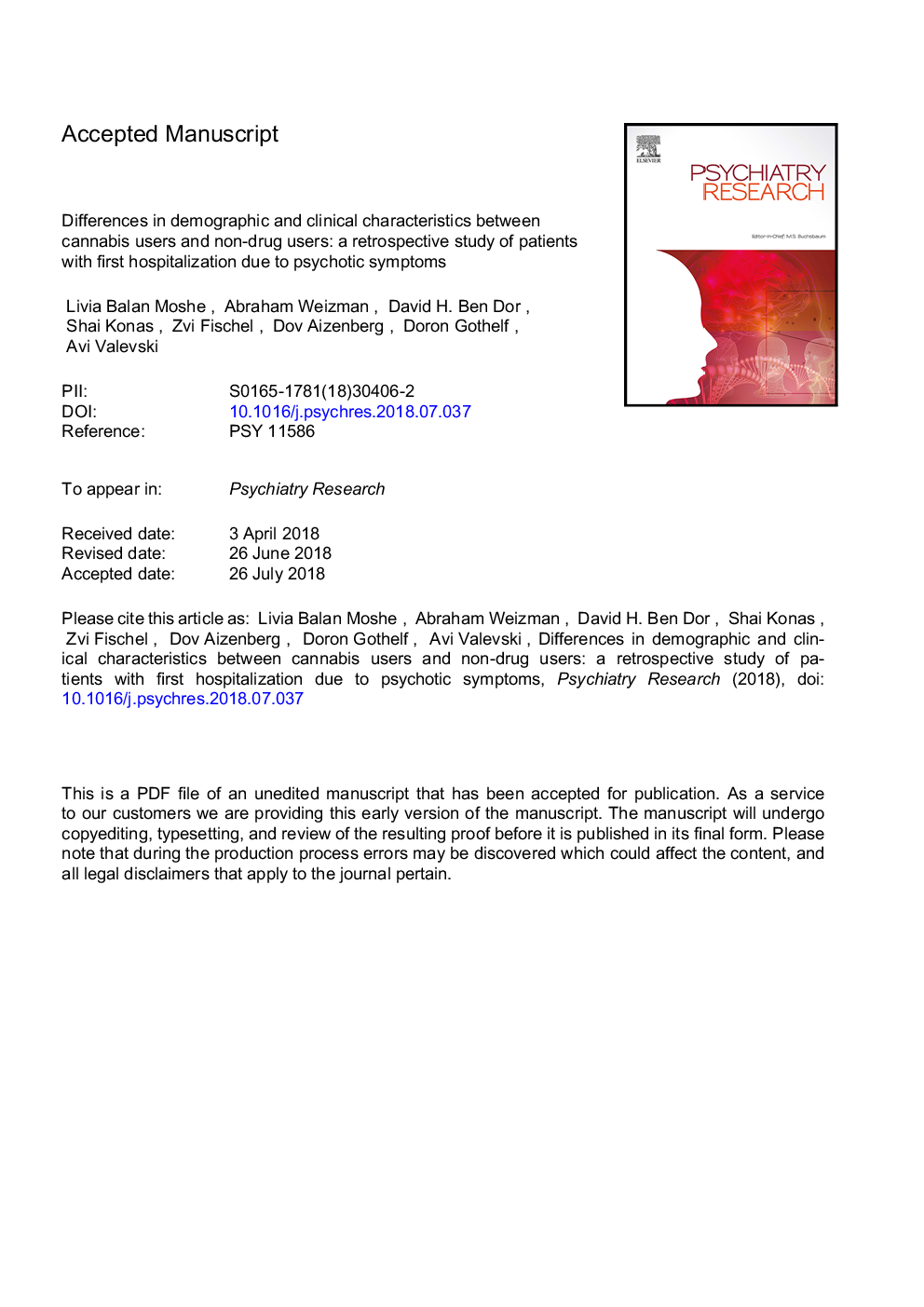| Article ID | Journal | Published Year | Pages | File Type |
|---|---|---|---|---|
| 11002031 | Psychiatry Research | 2018 | 30 Pages |
Abstract
This retrospective, chart review, cohort study compared demographic and clinical characteristics of cannabis -users and non-drug users at first admission due to psychotic symptoms at Geha Mental Health Center, Israel, between August 2002 and December 2013. We assessed the role of current cannabis use as a risk for re-hospitalization during this period as well as the stability of psychotic diagnoses at re-hospitalization. A total of 318 patients were included in the study, of which 106 (33.3%) were cannabis -users. The cannabis-user group had a shorter duration of hospitalization than the non-drug user group but without a significant difference in 5-year re-hospitalization rates. The latter had a higher rate of severe mental illness (SMI) diagnoses at first hospitalization (53.3% vs. 20.3%, respectively), but the difference disappeared at the second hospitalization. The two groups demonstrated a 79-80% rate of conversion from a non-SMI to an SMI diagnosis between the admissions. The results indicate the instability of non-SMI diagnoses at first hospitalization due to psychotic symptoms, regardless of concurrent cannabis use. The high conversion rate from non-SMI to SMI in current cannabis-users may be due to under-diagnosis of SMI at first admission or an effect of cannabis on the development of SMI.
Keywords
Related Topics
Life Sciences
Neuroscience
Biological Psychiatry
Authors
Livia Balan Moshe, Abraham Weizman, David H. Ben Dor, Shai Konas, Zvi Fischel, Dov Aizenberg, Doron Gothelf, Avi Valevski,
